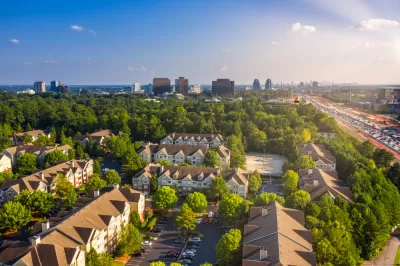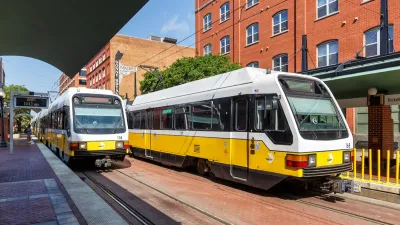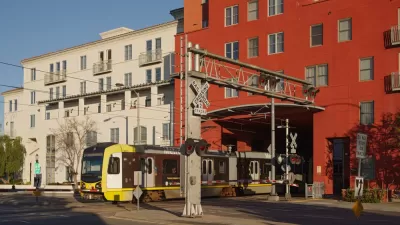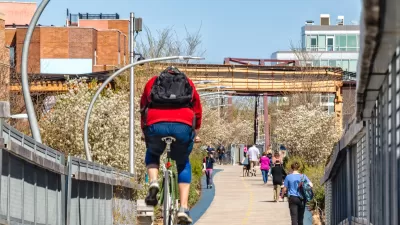Data from three U.S. metro areas show a failure to address land use and sprawl as a key factor driving climate change.

A report from Rushaine Goulbourne and Jenny Schuetz provides a model for climate-friendly housing development in Atlanta, Chicago, and Washington, D.C., three metro areas with different urban development patterns. The report notes that "over the past 30 years, most new homes in these metro areas have been built in suburban and exurban communities, with single-family homes making up roughly 70% of new homes—exactly the opposite of climate-friendly growth." But since 2005, multi-family units have started overtaking single-family construction, signaling a shift toward denser, more accessible developments. The authors recommend strategies including infill development that will put people closer to jobs and services and enable a 'car-light lifestyle.'
According to the report, "In Chicago and Washington, D.C., homes built in the urban core and along key transit spokes that connect to large suburban job centers create the greatest opportunity for non-car-dependent commutes. However, in the Atlanta metro area, nearly two-thirds of MARTA stations are located within the city of Atlanta, providing limited connections to major suburban job centers."
While most land use decisions are made at the local and state level, the authors note, the federal government can encourage more sustainable development by enacting rules that connect land use to transit funding and providing grants to boost transit.

Alabama: Trump Terminates Settlements for Black Communities Harmed By Raw Sewage
Trump deemed the landmark civil rights agreement “illegal DEI and environmental justice policy.”

Study: Maui’s Plan to Convert Vacation Rentals to Long-Term Housing Could Cause Nearly $1 Billion Economic Loss
The plan would reduce visitor accommodation by 25% resulting in 1,900 jobs lost.

Why Should We Subsidize Public Transportation?
Many public transit agencies face financial stress due to rising costs, declining fare revenue, and declining subsidies. Transit advocates must provide a strong business case for increasing public transit funding.

Paris Bike Boom Leads to Steep Drop in Air Pollution
The French city’s air quality has improved dramatically in the past 20 years, coinciding with a growth in cycling.

Why Housing Costs More to Build in California Than in Texas
Hard costs like labor and materials combined with ‘soft’ costs such as permitting make building in the San Francisco Bay Area almost three times as costly as in Texas cities.

San Diego County Sees a Rise in Urban Coyotes
San Diego County experiences a rise in urban coyotes, as sightings become prevalent throughout its urban neighbourhoods and surrounding areas.
Urban Design for Planners 1: Software Tools
This six-course series explores essential urban design concepts using open source software and equips planners with the tools they need to participate fully in the urban design process.
Planning for Universal Design
Learn the tools for implementing Universal Design in planning regulations.
Smith Gee Studio
Alamo Area Metropolitan Planning Organization
City of Santa Clarita
Institute for Housing and Urban Development Studies (IHS)
City of Grandview
Harvard GSD Executive Education
Toledo-Lucas County Plan Commissions
Salt Lake City
NYU Wagner Graduate School of Public Service





























